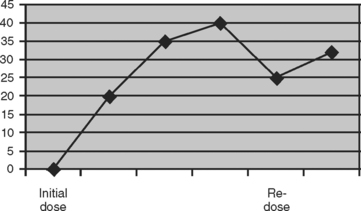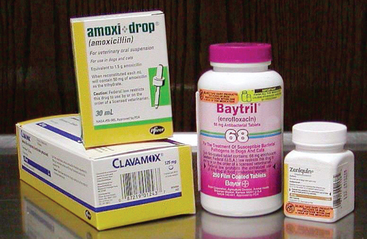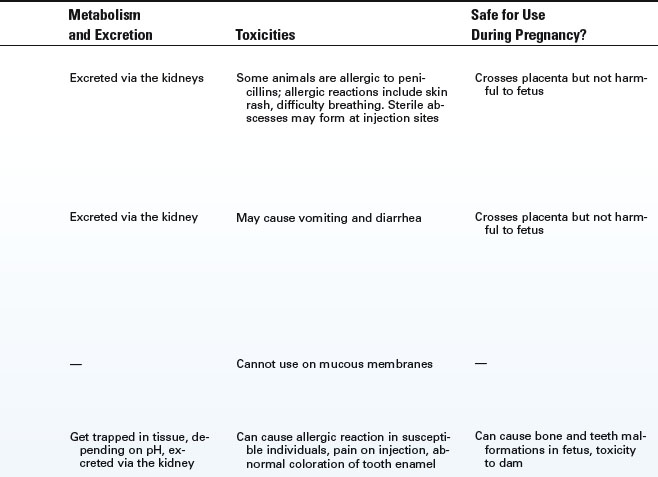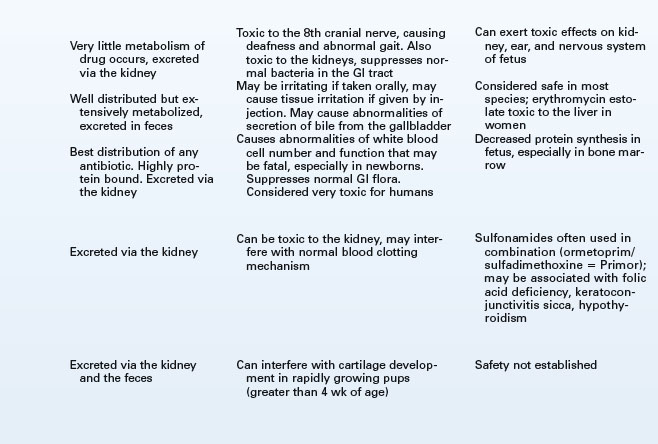2 Pharmacology
The number of times a day a drug is given determines the concentration of that drug in the bloodstream. When the drug is given, concentrations in the bloodstream are high initially and gradually fall. The idea is to give the drug again as the concentration falls off, to keep the concentration in a range that will be effective at all times. Most drugs are given for a while after the problem is resolved to allow the body to resolve the problem completely. For example, the outward signs of infection (redness, swelling, discharge) may be cleared up by antibiotics well before the dog’s immune system has completely cleared all the infection from the body.
I. GENERAL PHARMACOLOGY
Many drugs have not been studied in animals, and their use should not be taken lightly. It always is inappropriate to assume a drug will work the same way in domestic animals that it does in humans. Sir William Osler, a renowned physician from the turn of the last century, reminds us, “Remember how much you do not know. Do not pour strange medicines into your patient.”
A. ADMINISTRATION
D. PHARMACOTHERAPEUTICS
The goal is to maintain tissue concentrations of the drug at a level high enough to ensure the desired effect but not at a high enough level to produce side effects and to administer the drug frequently enough that the average amount of drug present in the bloodstream is in this effective and safe range at all times (Figure 2-2). This graph demonstrates the necessity of administering medications at the dose and interval recommended by the manufacturer and your veterinarian; other doses or frequency intervals may not permit maintenance of therapeutic concentrations of drug in tissues.
II. CLASSES OF DRUGS
A. ANTIBIOTICS
Antibiotics are compounds that kill living agents. Antimicrobials are specifically those compounds that destroy microorganisms. The term antiseptic generally is taken to mean an agent that will be used in the environment; the term antibiotic implies a drug that can be absorbed or ingested safely by animals or humans (Figure 2-3).
Antibiotics are broken down by the body fairly quickly and often have poor absorption into infected tissue. It is important to treat with an appropriate dose for an appropriate length of time to ensure that adequate concentrations of antibiotic are attained within infected tissue and to maintain effective concentrations in tissue for 24 to 60 hours after regression of infection so as to decrease likelihood of recurrence of infection. With antibiotics more is not better; toxicity can develop if excessive concentrations of antibiotic are reached in the blood. Finally some antibiotics can affect fetal development and should not be administered to pregnant bitches (Table 2-1).
< div class='tao-gold-member'>
Stay updated, free articles. Join our Telegram channel

Full access? Get Clinical Tree









